What's the best way to validate an Saas idea ?
Every great product, service, or business started as a simple idea. But how do you know if your idea is worth pursuing?

What’s the Best Way to Validate an Idea? A Practical Guide to Turning Concepts into Reality
Every great product, service, or business started as a simple idea. But how do you know if your idea is worth pursuing? The answer lies in validation—a process that helps you determine whether your concept has real potential in the market. In this guide, we’ll explore the best strategies to validate an idea, ensuring you invest your time, energy, and resources wisely.
Why Validating Your Idea Matters
Before diving into the how, let’s address the why. Validating an idea isn’t just about avoiding failure; it’s about maximizing your chances of success. According to CB Insights, 35% of startups fail because there’s no market need for their product. Validation helps you avoid this pitfall by confirming whether your idea solves a real problem for real people.
Think of validation as a reality check. It’s the bridge between a lightbulb moment and a viable business plan. By testing your assumptions early, you can refine your idea, identify your target audience, and build something people truly want.
Step 1: Define Your Hypothesis
Every great idea begins with a clear hypothesis—a statement that outlines the problem you’re solving and the solution you’re proposing. Think of it as the foundation of your validation process. Without a well-defined hypothesis, you risk wandering aimlessly, wasting time and resources on assumptions that may not hold up in the real world.
What Makes a Strong Hypothesis?
A strong hypothesis is specific, measurable, and actionable. It’s not just a vague notion like “I want to help people eat better.” Instead, it’s a focused statement that identifies:
- The Problem: Who is experiencing it, and why does it matter?
- The Solution: How does your idea address the problem in a unique or effective way?
Let’s break this down further with an example:
Problem: Busy professionals often struggle to find healthy, affordable meal options that fit their dietary preferences and hectic schedules. They end up resorting to fast food or skipping meals altogether, which impacts their health and productivity.
Solution: A subscription-based meal delivery service that offers customizable, diet-specific meals (e.g., keto, vegan, gluten-free) at an affordable price point, delivered directly to their doorsteps.
Why Specificity Matters
A vague hypothesis like “People want healthier food” doesn’t give you much to work with. Who are these people? What does “healthier” mean to them? How will your solution stand out in a crowded market?
By contrast, a specific hypothesis helps you:
- Identify Your Target Audience: In this case, busy professionals who value convenience and health.
- Clarify the Value Proposition: Customizable, affordable meals that save time and cater to specific dietary needs.
- Set Measurable Goals: For example, “Sign up 100 users in the first month” or “Achieve a 20% repeat order rate.”
How to Craft Your Hypothesis
-
Start with the Problem:
- Who is experiencing the problem? (e.g., busy professionals, parents, students)
- What are their pain points? (e.g., lack of time, high costs, limited options)
- Why is this problem worth solving? (e.g., impacts health, productivity, or quality of life)
-
Propose a Solution:
- How does your idea address the problem?
- What makes your solution unique or better than existing options?
- What specific benefits will users gain?
-
Make It Testable:
- Can you measure the success of your hypothesis? (e.g., through surveys, sign-ups, or sales)
- What evidence would confirm or refute your assumptions?
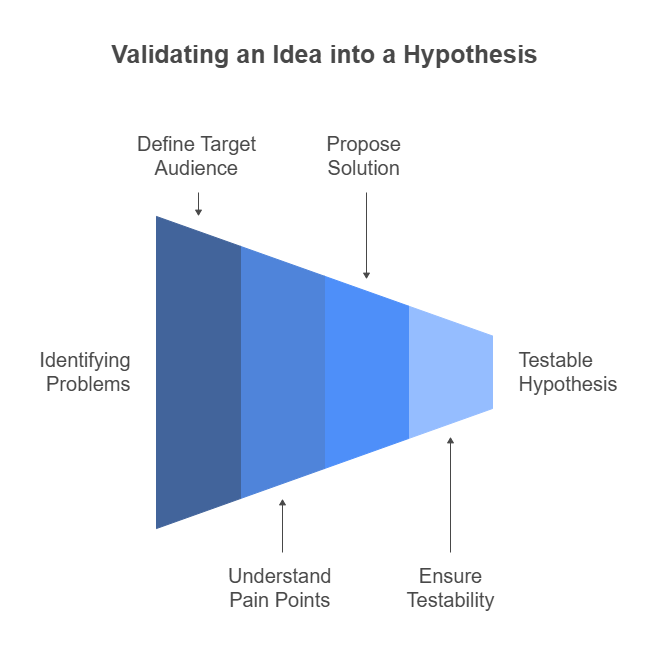 Image: Validating an Idea info Hypothesis
Image: Validating an Idea info Hypothesis
Example Hypotheses
Here are a few more examples to inspire your thinking:
-
Problem: Small business owners struggle to manage their finances efficiently.
Solution: A user-friendly accounting app that automates expense tracking and generates real-time financial reports. -
Problem: Pet owners find it difficult to travel because they lack reliable pet-sitting options.
Solution: A peer-to-peer pet-sitting platform that connects pet owners with trusted local caregivers. -
Problem: Fitness enthusiasts often lose motivation due to lack of personalized workout plans.
Solution: An AI-powered fitness app that creates customized workout routines based on individual goals and progress.
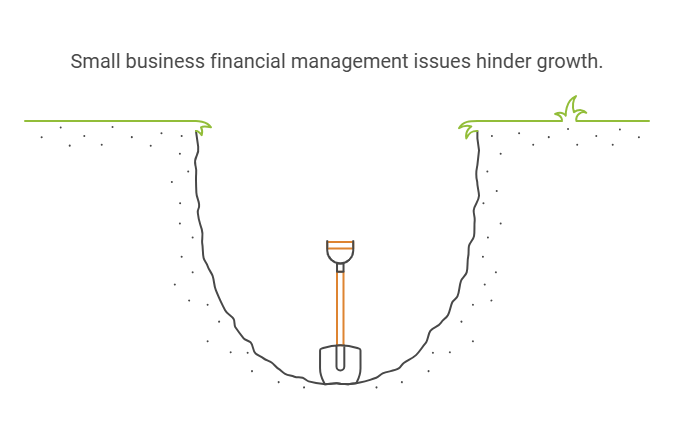 Image: Expalin Small Business financial managment issıes hinder growth
Image: Expalin Small Business financial managment issıes hinder growth
The Role of Assumptions
Every hypothesis is built on assumptions—beliefs you have about your target audience, the market, and your solution. The key is to identify these assumptions early and test them rigorously. For example:
- Assumption: Busy professionals are willing to pay a premium for convenience.
- Test: Survey your target audience to gauge their willingness to pay for a meal delivery service.
By validating your assumptions, you can refine your hypothesis and ensure it aligns with real-world needs.
Step 2: Conduct Market Research
Once you've clearly defined your hypothesis, the next critical step is conducting thorough market research. This phase is not merely about gathering information; it's about uncovering actionable insights that can either bolster or challenge your idea. Here’s a detailed approach to conducting effective market research:
1. Identifying Your Target Audience
Understanding your target audience is the cornerstone of market research. You need to delve into who these people are, what they need, and what challenges they face. For instance, if your hypothesis is about a meal delivery service for busy professionals, consider the following:
- Demographics: Age, income level, education, and occupation.
- Lifestyle Factors: Work hours, dietary preferences, and health consciousness.
- Pain Points: Limited time for meal preparation, desire for healthy options, and convenience.
Tools like Google Analytics and social media insights can provide valuable data on these aspects. For example, Google Analytics can reveal the interests and behaviors of your target audience based on their online activities.
2. Analyzing Competitors
Understanding the competitive landscape is crucial. Identify who your competitors are, what they offer, and how they position themselves in the market. A SWOT analysis (Strengths, Weaknesses, Opportunities, Threats) can be particularly insightful:
- Strengths: What are your competitors doing well? For example, a competitor might have a strong brand presence or a wide variety of meal options.
- Weaknesses: What are their shortcomings? Perhaps they lack customization options or have higher prices.
- Opportunities: How can you capitalize on their weaknesses? For instance, offering a more affordable or more customizable service.
- Threats: What challenges might you face? This could include new competitors entering the market or changes in consumer preferences.
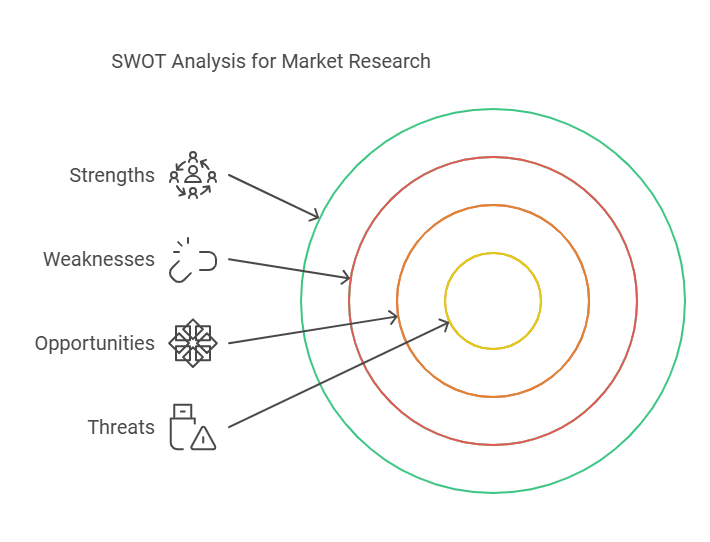 Image: SWOT analysis for Market Research
Image: SWOT analysis for Market Research
By identifying these elements, you can differentiate your service and fill any gaps in the market.
3. Exploring Industry Trends
Staying informed about current industry trends is essential for aligning your idea with market demands. Trends such as sustainability, plant-based diets, or convenience can significantly impact the success of your product. Here’s how to stay on top of these trends:
- Google Trends: Use this tool to see the popularity of certain search terms over time. For example, if there’s a rising interest in vegan diets, this could indicate a potential market for vegan meal options.
- Statista and Industry Reports: These platforms offer comprehensive data and analysis on various industry trends, providing you with the latest insights and statistics.
4. Utilizing Research Tools Effectively
Leverage a variety of tools to gather both primary and secondary research:
- Primary Research: This involves direct interaction with your target audience, such as surveys or interviews. For example, you could conduct a survey to understand the preferences and needs of busy professionals regarding meal services.
- Secondary Research: This includes analyzing existing studies, industry reports, and market analyses. For instance, reviewing reports on the meal delivery industry can provide valuable context.
5. Addressing Challenges in Market Research
Be aware of potential challenges, such as biased or outdated data. To mitigate these risks:
- Cross-Verification: Always cross-verify information from multiple sources to ensure accuracy.
- Data Freshness: Ensure that the data you’re using is recent and relevant to the current market conditions.
6. Integrating Research for Informed Decision-Making
The ultimate goal of market research is to refine your hypothesis and guide the next steps in validating your idea. This involves:
- Refining Your Hypothesis: Use the insights gained to adjust your initial assumptions and better align your idea with market needs.
- Informed Decision-Making: Use the data to make strategic decisions, such as pricing, marketing strategies, and service offerings.
By conducting comprehensive market research, you not only validate your idea but also position it strategically within the market. This step is not just about gathering data; it’s about understanding the market deeply and using that understanding to make informed, impactful decisions.
Step 3: Talk to Real People
While market research provides valuable insights, nothing compares to direct interaction with your target audience. Engaging with real people can reveal nuanced preferences, pain points, and motivations that quantitative data might overlook. Here’s a detailed approach to gathering feedback through various methods:
1. Surveys: Quantitative Insights
Surveys are an efficient way to collect data from a large audience. To make them effective:
- Design Thoughtful Questions: Combine multiple-choice questions with open-ended ones to capture both quantitative data and qualitative insights.
- Target the Right Audience: Use tools like Typeform, Google Forms, or SurveyMonkey, and distribute surveys through email, social media, or targeted ads to reach your specific audience.
- Analyze Responses Critically: Look for patterns and trends, and consider the context in which responses were given. Tools like Excel or specialized analytics software can help in organizing and interpreting data.
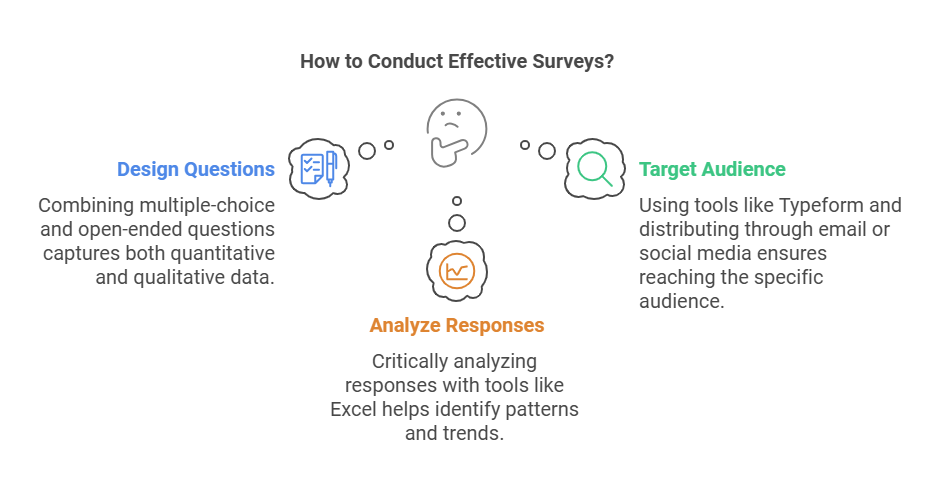 Image: How to Conduct Effective Surveys
Image: How to Conduct Effective Surveys
2. Interviews: Deep-Dive Conversations
Interviews offer a deeper understanding of individual perspectives:
- Prepare Thoroughly: Draft a list of open-ended questions that encourage detailed responses. Examples include, "What challenges do you face when [insert relevant activity]?" or "How would this product/service benefit you?"
- Find the Right Participants: Use snowball sampling or professional networks to connect with individuals who fit your target demographic.
- Conduct Meaningful Conversations: Allow the conversation to flow naturally, but guide it to cover key areas of interest. Take notes or record the session (with consent) for later analysis.
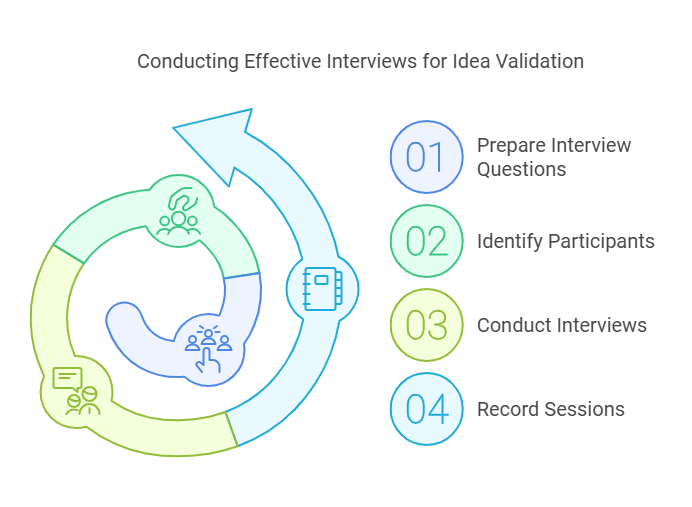 Image: Conducting Effective Interviews for Idea Validation
Image: Conducting Effective Interviews for Idea Validation
3. Social Media Polls: Instant Feedback
Social media polls are quick and can reach a broad audience:
- Pros and Cons: While they offer instant data, they may not always reflect your core audience. Use them to gauge general interest but complement with other methods for deeper insights.
- Engage Actively: Respond to comments and questions that arise from the poll to build a community and gather additional feedback.
4. Additional Methods for Feedback
- Focus Groups: Gather a small group of participants to discuss their perceptions and experiences. This can provide rich, contextual insights.
- User Testing: Observe how people interact with a prototype or early version of your product. Note their reactions and challenges.
- Community Engagement: Participate in forums, Reddit groups, or social media communities related to your niche. Engage in discussions to understand common concerns and interests.
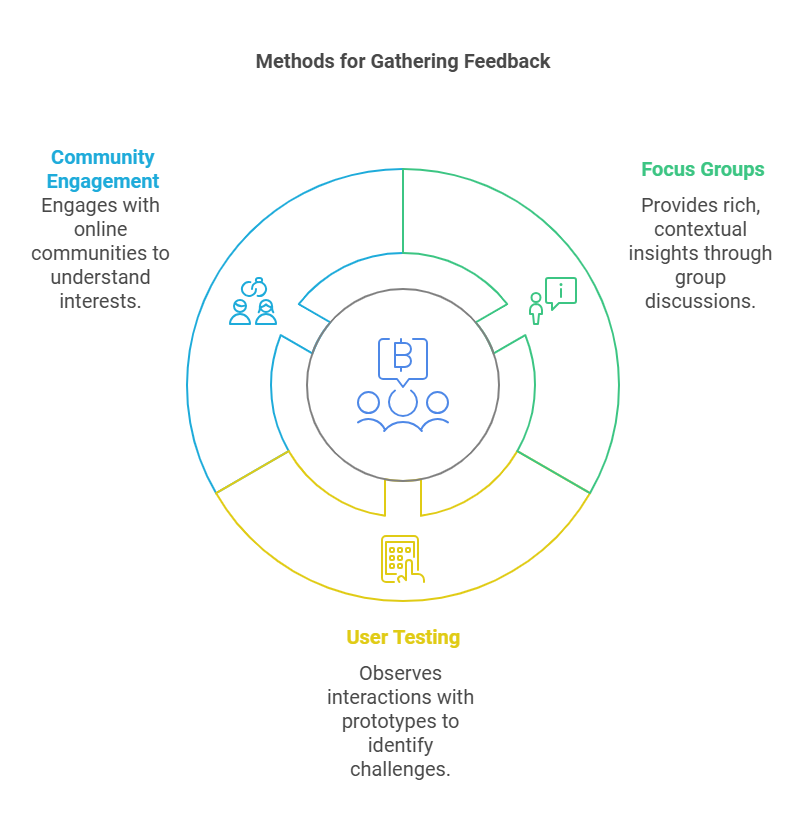 Image: Methods for Gathering Feedback
Image: Methods for Gathering Feedback
5. Active Listening and Interpretation
- Listen More, Talk Less: Allow participants to express their thoughts without interruption. Pay attention to both what they say and how they say it.
- Identify Underlying Motivations: Look beyond surface-level responses to understand the deeper needs and desires of your audience.
6. Mitigating Biases
- Encourage Honesty: Assure participants that all feedback is valuable, regardless of whether it aligns with your expectations.
- Use Open-Ended Questions: These allow for more spontaneous and honest responses.
- Observe Behavior: Sometimes, what people do differs from what they say. Consider incorporating observation techniques to gather unbiased data.
7. Integrating Feedback into Validation
- Prioritize Insights: Focus on feedback that aligns with your core hypothesis and addresses critical pain points.
- Iterate and Refine: Use the insights to tweak your idea, improve features, or pivot your approach if necessary.
- Communicate Findings: Share key takeaways with your team or stakeholders to ensure everyone is aligned with the validation process.
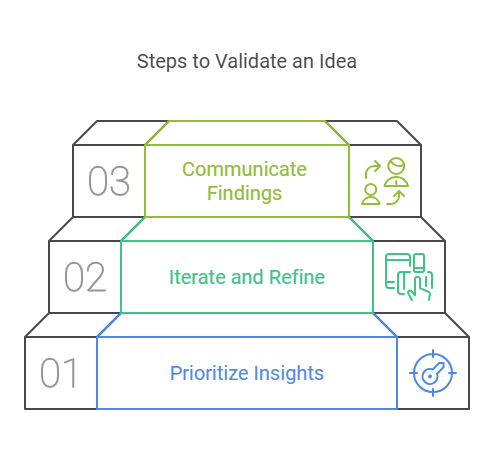 Image: Steps to Validate an Idea
Image: Steps to Validate an Idea
By employing these strategies, you can gather comprehensive and actionable feedback that truly reflects the needs and preferences of your target audience, thereby enhancing the validity and potential success of your idea.
Step 4: Build a Minimum Viable Product (MVP)
In the journey of turning an idea into a successful product, the Minimum Viable Product (MVP) is a crucial step. An MVP is a simplified version of your product or service designed to test your idea with minimal resources, allowing you to gather real-world data and validate your concept.
What is an MVP?
An MVP is not about creating a perfect product; it's about creating something just good enough to learn from. The goal is to understand if there is a market for your idea and if it solves a real problem for your target audience. By focusing on the core features that address the main problem, you can save time and money while gaining valuable insights.
Why Build an MVP?
-
Resource Efficiency: Building an MVP allows you to test your idea without committing significant resources to a full-fledged product.
-
Real-World Feedback: An MVP provides actionable data from real users, helping you understand what works and what doesn’t.
-
Iterative Development: The MVP is the starting point of an iterative process. Each iteration refines the product based on user feedback, leading to a better final product.
Examples of MVPs
-
Landing Page with Sign-Up Form: A simple page that explains your product and invites users to sign up. High sign-ups indicate interest.
-
Basic Prototype or Demo Video: Useful for complex products, a demo video can illustrate how the product works and its benefits.
-
Small Batch of Product for Early Adopters: For physical products, releasing a small batch to eager users can provide insights into usability and demand.
How to Build an MVP
-
Identify Core Features: Determine the essential features that solve the main problem your product addresses.
-
Simplify: Create the simplest version of these features that still provides value to users.
-
Launch and Collect Feedback: Release the MVP to a limited audience and gather feedback on usability, functionality, and overall appeal.
-
Iterate: Use the feedback to refine and improve the product, adding features or making changes based on user input.
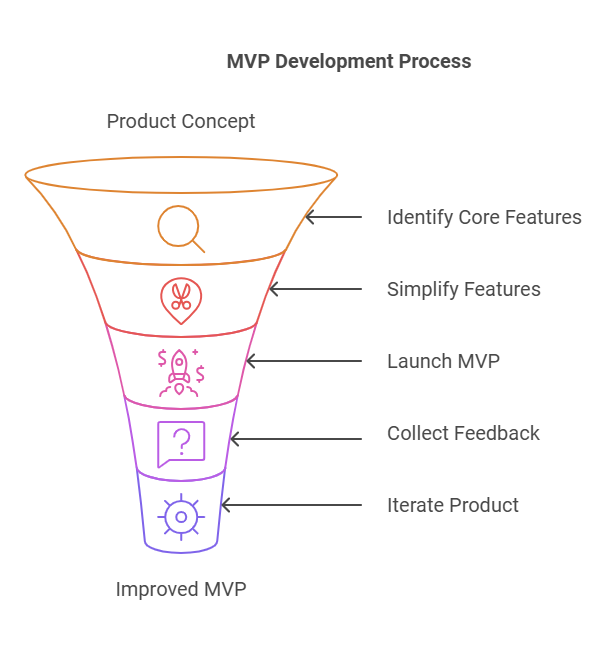 Image: MVP Development Process
Image: MVP Development Process
Benefits and Risks of Not Building an MVP
-
Benefits: Saves time and money, provides early validation, and allows for iterative improvement.
-
Risks of Skipping MVP: Developing a full product without validation can lead to wasted resources and a product that doesn’t meet market needs.
Common Misconceptions
-
MVP is Just a Cheap Version: An MVP is about focusing on core features, not about being cheap.
-
MVP is a One-Time Effort: It’s part of an ongoing cycle of building, testing, and learning.
Tools and Platforms
-
Web Apps: Use platforms like Webflow or Squarespace for landing pages.
-
Prototypes: Tools like Figma or InVision for digital prototypes.
-
Physical Products: 3D printing services or prototyping workshops.
-
Dropbox: a secure way to store your data
Case Study: Airbnb
Airbnb started with a simple platform allowing users to rent air mattresses in hosts' homes. Through iterative improvements based on user feedback, it evolved into a global lodging marketplace.
Step 5: Analyze and Iterate
Validation isn’t a one-and-done process. It’s an ongoing cycle of testing, learning, and refining. Once you’ve gathered feedback from your MVP, analyze the results and look for patterns.
Key Metrics to Track:
- Engagement: Are people interacting with your MVP?
- Conversion Rates: How many people are taking the desired action (e.g., signing up, making a purchase)?
- Customer Feedback: What are users saying about your idea?
Based on your findings, make adjustments to your concept. This iterative approach ensures your idea evolves to meet the needs of your audience.
Common Pitfalls to Avoid
While validating your idea, it’s easy to fall into certain traps. Here are a few to watch out for:
| Pitfall | Why It’s Problematic | How to Avoid It |
|---|---|---|
| Confirmation Bias | Only seeking feedback that supports your idea. | Actively seek out dissenting opinions. |
| Overcomplicating the MVP | Spending too much time and money upfront. | Focus on simplicity and speed. |
| Ignoring Competitors | Failing to learn from others’ successes or mistakes. | Conduct thorough competitor analysis. |
Final Thoughts: Validation Is a Journey
Validating an idea isn’t just a box to check—it’s a mindset. It’s about staying curious, open-minded, and willing to adapt. By following these steps, you’ll not only increase your chances of success but also build a deeper understanding of your audience and market.
So, what’s the best way to validate an idea? Start small, listen closely, and keep iterating. The road from concept to reality may not always be smooth, but with the right approach, it can be incredibly rewarding.
What’s your experience with validating ideas? Have you tried any of these strategies? Share your thoughts in the comments below—we’d love to hear your story!
Resources for Further Reading
- OpenVC's comprehensive guide on validating startup ideas
- Netguru's overview of business idea validation frameworks
- Ownr's step-by-step approach to validating business ideas
- Cprime's techniques for validating startup ideas
- Lenny's Newsletter discussing methods for picking and validating ideas
These resources provide additional insights and detailed methodologies that can be beneficial for anyone looking to validate their business concept effectively.
Disclaimer: This blog post is for informational purposes only and does not constitute professional advice. Always conduct thorough research and consult with experts before making business decisions.
